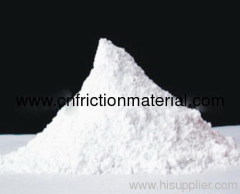Phenolic Resin modified by Nitrile Butadiene Rubber (NBR)
Type | Appearance | Aggregation speed S.150 ℃ | Free Phenol (%) | Flow Length (mm) | Water Content(%) | Urotropin(%) | Particle Size(250 mesh) | Application |
211 | White or little yellow powder | 59-90 | ≤2.5 | 40±10 | ≤1.5 | 8.5-9.5 | ≥95% | Making Brake Pad |
214 | White or little yellow powder | 59-90 | ≤1.5 | 35-55 | ≤1.5 | 8.5-9.5 | ≥95% | Making Brake Pad |
Phenolic Resin
Friction elements, particularly non-asbestos types, are a complex composite that consiists of anywhere from 10 - 25 individual components. The effect of the resin on the finished friction elements friction peformance is dependent upon the total formulation and processing conditions, and given the complexity only general guidelines can be given. Five parameters are usually considered when choosing which type of powdered phenolic resin to use:
Flow distance
Flow distance can vary from short (12.5mm) to long (90mm). Resins with short flow distances means that friction mixes tend to flow less during the press-cure stage. This tends to reduce density and increase porosity giving beneficial effects on the NVH properties of the friction element. The biggest drawback with short flow resins is the need for extremely reproducible control of the manufacturing process. Conversely, a long flow resins tend to produce high-density, low porosity friction elements where the fibres and fillers are well integrated into the mix and processing is relatively easy. However, the high-density and reduced porosity do increase the friction elements tendency to blister.
Hexamine Level
Low levels of hexamine curing agent will naturally produce a lower cross-linked density in the cured polymer. This will result in a lower hardness, increase flexibility and a reduction in amount of ammonia generated that will reduce the tendency to blister. Conversely a high level of hexamine will give a high cross-linked density,faster cure rate, higher hardness, improved thermal stability, higher ammonia emissions and an increased tendency to blister.
Gel tiem reactivity
Fast reactivity resin enhances manufacturing productivity by reducing press cycle times. However, as with short flow resins, high reactivity resins place great demands on manufacturing process control and reproducibility.
Residual phenol
Residual or free phenol in novolac resins arises during the manufacturing process, and this is physically removed from the novolac by distillation. Typical residual phenol levels range from 0.3 - 0.5%. Free phenol can be thought of as a reactive solvent in that, in the early stages of processing a friction element is lowers melt viscosity and improves wet out and coating of the fillers and fiber. As reactioin proceeds, the residual phenol will react with hexamine and resin to be incorporated into the cured polymer. The drawback of having too much residual phenol is the potential for work place emissions. How much of a problem this is for a manufacturer depends on the particular resin and manufacturing process. However, most resins with residual phenol levels of <2% do not cause significant emiission problems compared to ammonia and formaldehyde levels. Obviously, the relevant national legislation is significant in determining what is required.
Resin Modification
A wide range of modified phenolic resins are available"
CNSL: Improved NVH, flexibility
Epoxy: Good adhesion to metal fibres
Rubber: Improved NVH, flexibility
PVB: Improved NVH, flexibility
Alkyl phenol: Improved NVH, flexibility
Chloroprene: Improved NVH, low fade
Silicon: Thermal resistance
Packing and storage
Powder resin: Packed in 20 or 25 bags with Kraft paper-plastic woven composite outside, lined with plastic liner, or 500 kg polypropylene bulk bags. Resin must be stored below 25℃ in a well ventilated, cool,dry place, away from direct sunlight,or other heat souces. Do not stack bags too high in order to avoid agglomeration. During storage and especially when exposed to heat and/or moisture soft lumps may form. Typical shelf life 6 months.






